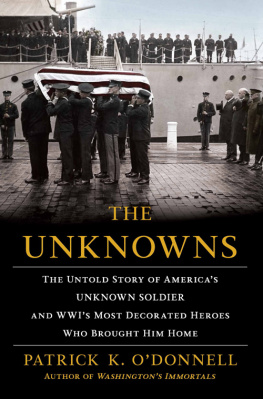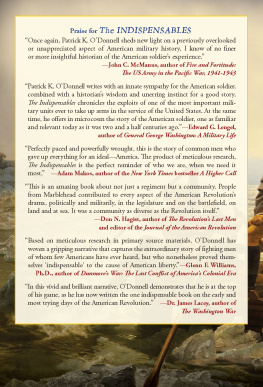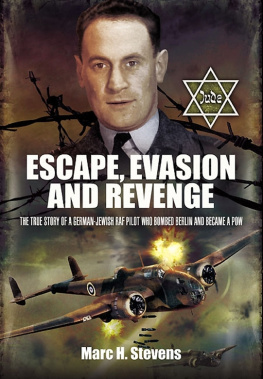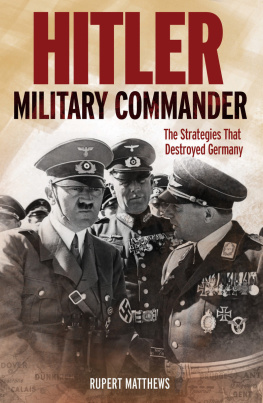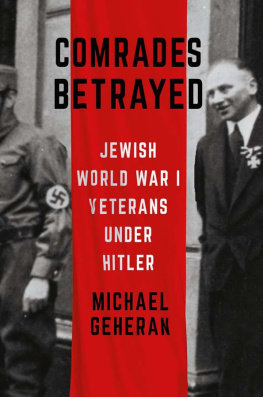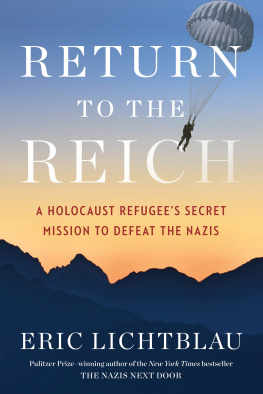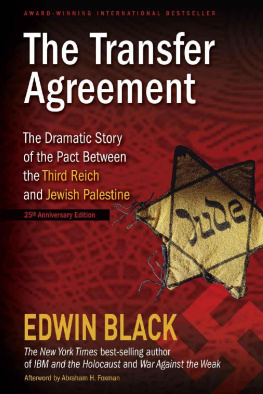THEY DARED RETURN
First published in Great Britain in 2009 by Simon & Schuster UK Ltd
A CBS COMPANY
Copyright 2009 by Patrick K. ODonnell
This book is copyright under the Berne convention.
No reproduction without permission.
All rights reserved.
The right of Patrick K. ODonnell to be identified as the authors of
this work has been asserted by him in accordance with sections 77 and 78
of the Copyright, Designs and Patents Act, 1988.
1 3 5 7 9 10 8 6 4 2
Simon & Schuster UK Ltd
1st Floor
222 Grays Inn Road
London WC1X 8HB
www.simonandschuster.co.uk
Simon & Schuster Australia
Sydney
A CIP catalogue record for this book is available
from the British Library.
ISBN: 978-1-84737-790-6
eBook ISBN: 978-1-84737-863-7
Designed by Timm Bryson
Printed in the UK by CPI Mackays, Chatham ME5 8TD
TO
Lily Bear, my cute-o-saurus
the greatest daughter in the world
My Parents
Fred Mayer, Hans Wynberg, and the other
members of the German-Austria Section,
whose intrepid heroism inspires the next
Greatest Generation of modern warriors
David Stapleton, who knows it takes more than cold steel to win wars
CONTENTS
ACKNOWLEDGEMENTS
My journey into World War II history began thirty-five years ago when I was four years old. After picking up a World War II pictorial history book by accident and scanning a few combat photos, I was completely drawn in. This journey of discovery has included interviewing twenty-five hundred World War II veterans, travelling to Western Europes most important battlefields, and even experiencing combat, as an embedded historian with todays American warriors, to find out if this generation is the next Greatest Generation. They truly are, as my book We Were One: Shoulder to Shoulder with the Marines Who Took Fallujah (2006) demonstrates. They Dared Return is my sixth book on a subject that I cannot seem to escape. Im fascinated by history and feel strongly about honouring the veterans by telling their stories. Each passing year more of our World War II veterans stories slip away, lost to future generations, never to be told. Helping tell these stories is not just my job, its my passion! Its a part of me, something I have willingly risked everything for, including my life.
Serendipitously, the stories always seem to find me, and this is certainly the case with Frederick Mayer, whom I met eight years ago. After interviewing hundreds of World War II veterans, I found Mayer and his story captivating. This book is about Freds mission: Operation Greenup. It also touches upon members of the Jewish five, five best friends, including Operation Greenups Mayer and Hans Wynberg. All were former refugees from Nazi Germany, who dared to return behind the lines. The other members of the Five: Bernd Steinitz (Dillon Mission) and George Gerbner and Alfred Rosenthal (Dania Mission) are touched upon in this volume when they intersect with Greenup, but they deserve separate treatment. Nevertheless, I included their original mission reports as an addendum to shed light on their extraordinary stories. Their daring was fuelled by patriotism and a willingness to make a difference against an enemy that killed many of their family members. But this book is not just about the five; it also includes the untold story of a hero who turned his back on the German army for his own private reasons: Hermann Matull. But Frederick Mayer is the focal point of this volume, and a special breed of man he is. At eighty-nine years young, he still chops wood every day, mows the lawn, and serves food to the poor every week. He is humble and shies away from telling this story. Hes an extraordinary person someone who has taught me a great deal about life.
But the story is the story. In an unbiased manner, I tried to tell it by presenting the reader with exactly what happened, from all the key stakeholders points of view, including Austrian civilians, members of the German security service, and, of course, the daring and heroic OSS agents who went behind enemy lines to bring down Hitlers Third Reich.
I would like to thank first and foremost the OSS veterans for sharing their stories, especially Frederick Mayer and his best friend to this day, Hans Wynberg, a retired professor emeritus of chemistry at the University of Groningen. Wynberg is an equally extraordinary individual, who spent countless hours on the phone with me and sent long e-mails recalling his time behind the lines. I am also grateful to Bernd Steinitz and George Gerbner, who provided invaluable information about the other missions of the Jewish five. Finally, I want to acknowledge those brave veterans mentioned in this book who have died admirable men, such as Dyno Lowenstein and Walter Haass, whose hidden contributions made the missions possible.
I would also like to thank my agent and friend, Andrew Zack, and the best publicist any author could ever have, Lissa Warren. I am grateful to Chris Butsavage for his keen suggestions and editorial comments, and to historian Dr. Troy Sacquety for his thorough and critical feedback for this book and on my previous book, The Brenner Assignment: The Untold Story of the Most Daring Spy Mission of World War II (2008). My friends Madison Parker and Casey Trahan, for their keen eyes. And also Ben Ibach for his excellent and numerous ideas that enhanced the narrative. Special thanks to Morgan Wilson. The OSS Societys current president, Charles Pinck, who has advocated and encouraged my work and books, deserves my heartfelt gratitude. Most importantly, I would like to thank my editor and friend, Robert Pigeon. Bobs peerless editorial skills, judgement, and ideas greatly enhanced this narrative and made this book a reality.

PROLOGUE
April 1945, Gestapo Headquarters, Innsbruck, Austria.
Jude! the tall one barked, glaring into the mans swollen eyes.
Ach Quatsch! (Nonsense!), another Gestapo officer stated. It was inconceivable that a Jew would dare return to the heart of the Third Reich as an Allied agent.
In the dank room, the Gestapo officers slapped and punched the spy in the face. His cover wasnt holding water, and so the tall one stripped him from head to toe. Despite the agents bullish strength, the SS men brutally manhandled him, shoving him to the floor. Cuffing his hands in front of him and pulling his arms over his bent knees, they forced him into a constricting foetal position, then shoved the barrel of a long rifle into the tiny gap behind his knees and his cuffed hands. With a man on each side of the rifle, they lifted his naked, rolled-up body and suspended the human ball between two tables, like a piece of meat on a skewer. Uncoiling a rawhide whip, the tall one put his full weight behind each swing, mercilessly thrashing the agents body like a side of beef.
Wo ist der funker? (Where is the radio operator?)
Wo ist der funker?
A crimson pool spread beneath the agents body. In spite of the torment, he refused to crack, reiterating that he was merely a foreign worker (like thousands employed in the Reichs factories).
When the whipping didnt work, the Gestapo men decided to water-board their prisoner. They brought out two pitchers of water, and tipping their captives face to the ceiling, they poured the cold liquid down his mouth and nose. The water splashed into his mouth, forced open by rough hands. He felt like he was drowning, while the liquid painfully dripped into his perforated eardrum. The Nazis were methodical. One man poured while the second refilled the other pitcher. The torture assembly line kept running for six hours.
Next page

